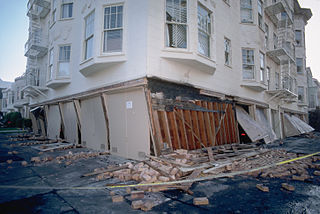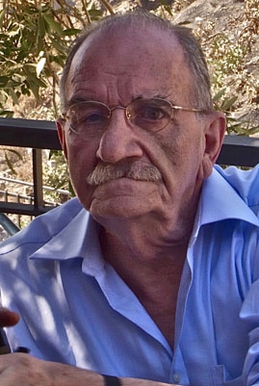
Seismic retrofitting is the modification of existing structures to make them more resistant to seismic activity, ground motion, or soil failure due to earthquakes. With better understanding of seismic demand on structures and with recent experiences with large earthquakes near urban centers, the need of seismic retrofitting is well acknowledged. Prior to the introduction of modern seismic codes in the late 1960s for developed countries and late 1970s for many other parts of the world, many structures were designed without adequate detailing and reinforcement for seismic protection. In view of the imminent problem, various research work has been carried out. State-of-the-art technical guidelines for seismic assessment, retrofit and rehabilitation have been published around the world – such as the ASCE-SEI 41 and the New Zealand Society for Earthquake Engineering (NZSEE)'s guidelines. These codes must be regularly updated; the 1994 Northridge earthquake brought to light the brittleness of welded steel frames, for example.
Earthquake engineering is an interdisciplinary branch of engineering that designs and analyzes structures, such as buildings and bridges, with earthquakes in mind. Its overall goal is to make such structures more resistant to earthquakes. An earthquake engineer aims to construct structures that will not be damaged in minor shaking and will avoid serious damage or collapse in a major earthquake. A properly engineered structure does not necessarily have to be extremely strong or expensive. It has to be properly designed to withstand the seismic effects while sustaining an acceptable level of damage.
TYLin is a global, multi-disciplinary infrastructure services firm. Headquartered in San Francisco, TYLin established its business in the design of long-span bridges and specialty structures.

Seismic base isolation, also known as base isolation, or base isolation system, is one of the most popular means of protecting a structure against earthquake forces. It is a collection of structural elements which should substantially decouple a superstructure from its substructure that is in turn resting on the shaking ground, thus protecting a building or non-building structure's integrity.

National Center for Research on Earthquake Engineering is an organisation in Da'an District, Taipei, Taiwan.
Nabih Youssef, S.E., F.A.S.C.E was an American structural engineer, most recognized for his work in seismic engineering.Youssef is recognized for translating academic structural engineering concepts into practical applications, most notably through the base isolation technique employed in the Los Angeles City Hall renovations. His significant achievements also include advancements in Performance-based building design and the use of a Steel plate shear wall in areas of high seismic risk.
Rutherford + Chekene is a structural and geotechnical engineering firm in California specializing in new design and retrofit of structures for clients in sectors that include healthcare, higher education, corporate, research and development, art and education, and technology.

A soft story building is a multi-story building in which one or more floors have windows, wide doors, large unobstructed commercial spaces, or other openings in places where a shear wall would normally be required for stability as a matter of earthquake engineering design. A typical soft story building is an apartment building of three or more stories located over a ground level with large openings, such as a parking garage or series of retail businesses with large windows.

Earthquake-resistant or aseismic structures are designed to protect buildings to some or greater extent from earthquakes. While no structure can be entirely impervious to earthquake damage, the goal of earthquake engineering is to erect structures that fare better during seismic activity than their conventional counterparts. According to building codes, earthquake-resistant structures are intended to withstand the largest earthquake of a certain probability that is likely to occur at their location. This means the loss of life should be minimized by preventing collapse of the buildings for rare earthquakes while the loss of the functionality should be limited for more frequent ones.

Harry Bolton Seed was an educator, scholar, former professor at the University of California, Berkeley. He was regarded as the founding father of geotechnical earthquake engineering.
SunLink Corporation was a privately-owned company headquartered in Mill Valley, California that manufactured renewable energy products. SunLink's Warehouse and Training Center was located in San Leandro, California. Product design, testing and fabrication took place in California. Manufacturing was done in the United States and China. Founded in 2004, SunLink installed more than 120,000 commercial and utility-scale installations throughout the Americas by 2012. In 2018, NEXTracker sued SunLink for infringing on two of its patents regarding mounting, and securing, systems. In 2019, SunLink agreed to withdraw from the market and foreclosed on the majority of its assets.
Ivan Lyall Holmes was a New Zealand structural engineer whose advances in concrete masonry building methods in the 1950s and 1960s were central to the avant-garde style of modernist architecture known as New Brutalism which emerged in the 1950s. It was epitomised locally in the work of architects such as Miles Warren, Maurice Mahoney and Paul Pascoe.

Nicholas Neocles Ambraseys FICE FREng was a Greek engineering seismologist. He was emeritus professor of engineering seismology and senior research fellow at Imperial College London. For many years Ambraseys was considered the leading figure and an authority in earthquake engineering and seismology in Europe.
Miyamoto International is a global structural engineering and disaster management firm best known for its work in California earthquake design for new and existing buildings as well as in the reconstruction of Port-au-Prince, Haiti and Christchurch, New Zealand following earthquakes in 2010 and 2011. Based in West Sacramento, California, the company has 25 offices in 12 countries worldwide.

Sir Ronald Powell Carter is a retired New Zealand businessman.

Michael John Nigel Priestley was a New Zealand earthquake engineer. He made significant contributions to the design and retrofit of concrete structures, and developed the first displacement-based method of seismic design.

Medhat Haroun was an Egyptian-American expert on earthquake engineering. He wrote more than 300 technical papers and received the Charles Martin Duke Lifeline Earthquake Engineering Award (2006) and the Walter Huber Civil Engineering Research Prize (1992) from the American Society of Civil Engineers.
Nicholas F. Forell was a structural engineer and a leading authority in the development of modern earthquake safety design. He was a founder and former president of the San Francisco firm Forell/Elsesser Engineers.

Dr. Hideki "Kit" Miyamoto is a Japanese American structural engineer known for being the founder-CEO of Miyamoto International, a global structural engineering and disaster risk reduction organization. He is also the chairman of California's Alfred E. Alquist Seismic Safety Commission, which investigates earthquakes and recommends policies for risk reduction.

BNZ Harbour Quays was a large, award-winning office building on the waterfront in Wellington, New Zealand. It was built in 2009 and leased to the Bank of New Zealand, but suffered earthquake damage in the 2013 Seddon earthquake and the 2016 Kaikōura earthquake. The building was demolished in 2019.












